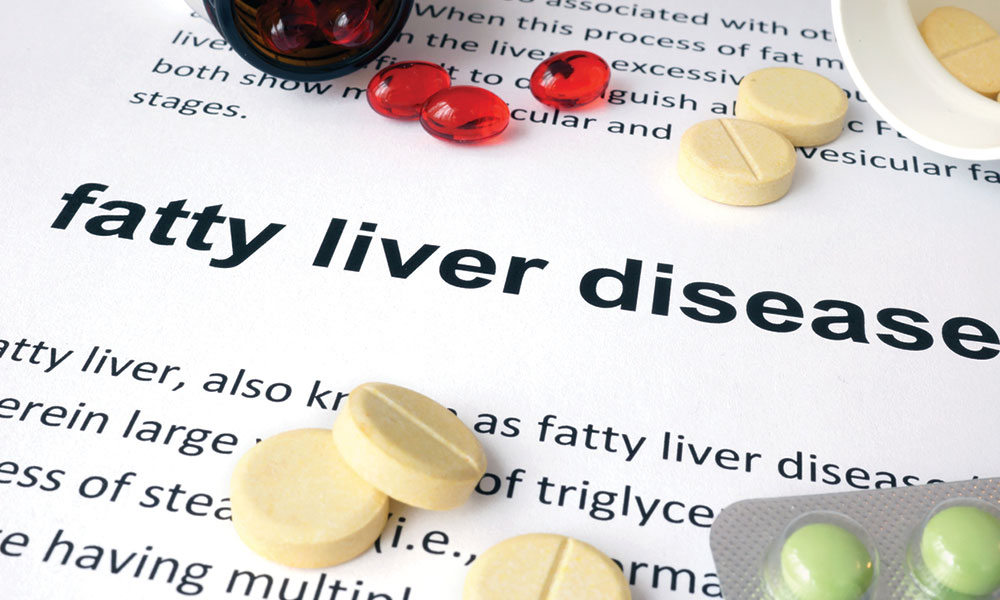Risks Associated with Non-Alcoholic Fatty Liver Disease

Non-alcoholic fatty liver disease (NAFLD) is the result of excess fat buildup in the liver, not directly related to alcohol consumption. Career alcoholics and those who drink heavily are predisposed to fatty liver and liver disease, but their condition is as a result of drinking alcohol. NAFLD and its closely-associated disease, non-alcoholic steatohepatitis (NASH) are diagnosed for other reasons. Read on to learn more about the symptoms and risks for non-alcoholic fatty liver disease, as well as its strong correlation to cancer diagnosis.
Symptoms of NAFLD
Like many other diseases, those with fatty liver disease may not immediately have warning signs or problems that seem out of the ordinary. Some of the most prevalent symptoms of NAFLD include fatigue, weight loss, nausea, abdominal pain, and swelling of the legs (edema). However, these symptoms are also common in other gastrointestinal disturbances. What sets NAFLD apart from other conditions is the appearance of jaundice, which is a yellowing of the skin and the eyes. Other than when it is present in newborns (which is a common occurrence), jaundice is a hallmark of some type of liver disease or problem.
What is NASH?
Non-alcoholic steatohepatitis (NASH) is a serious form of NAFLD in which fatty liver is present in addition to inflammation of the liver (hepatitis) and liver cell damage. Because inflammation and cell damage can lead to scarring, those who have NASH are predisposed to more serious issues, such as liver cancer and cirrhosis, both of which can be deadly. NASH and NAFLD are sometimes used interchangeably; however, it is important to note the difference between the two.
Risks Associated with NAFLD
Many patients with non-alcoholic fatty liver disease have a good quality of life and do not have many complications when it comes to the diagnosis of fatty liver. Those with NASH run the risk of liver cancer and cirrhosis, and sometimes treatment of these conditions requires a full liver transplant. However, a recent 2018 study found a correlation between the diagnosis of GI cancers (liver, stomach, pancreas, and colon) and the diagnosis of NAFLD. In fact, patients with non-alcoholic fatty liver disease had a 91 percent higher chance of being diagnosed with malignant cancer. Researchers also went on to say that the “risk for cancer with obesity is driven by NAFLD.” Obesity is one of the main risk factors when it comes to developing fatty liver, but there are others that patients should be aware of to help prevent a diagnosis of NAFLD.
Prevention of NAFLD
To prevent non-alcoholic fatty liver disease, patients are urged to maintain a healthy weight. Those who are obese have a much higher incidence of NAFLD. Other ways to prevent fatty liver include:
- Regular exercise and a healthy diet
- Limiting alcohol intake (alcohol takes a toll on your liver in any capacity; drinking in moderation or not at all is suggested)
- Only taking medications, such as nonsteroidal anti-inflammatory drugs (NSAIDS) according to the label
- Avoiding foods that are high in fat, but particularly saturated fats and trans fats
If you have more questions about nonalcoholic fatty liver disease or have gastrointestinal upset and would like to be seen by a physician, book an appointment with Gastroenterology Consultants of Savannah today. We offer five separate and convenient locations in the Georgia area and one South Carolina location to provide you with the best of care.